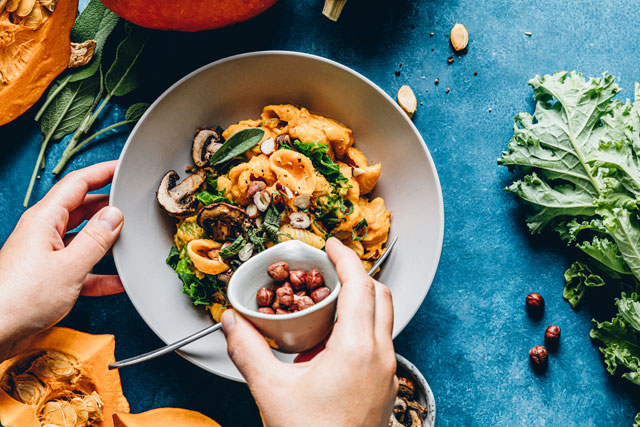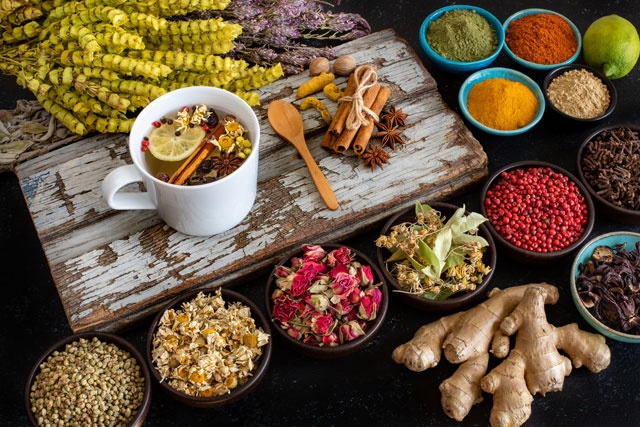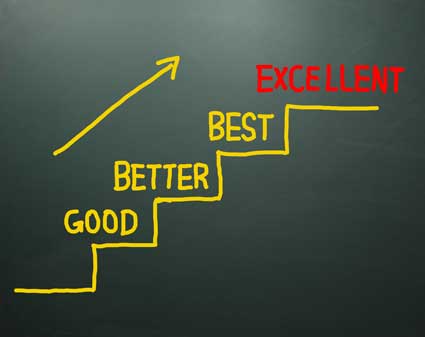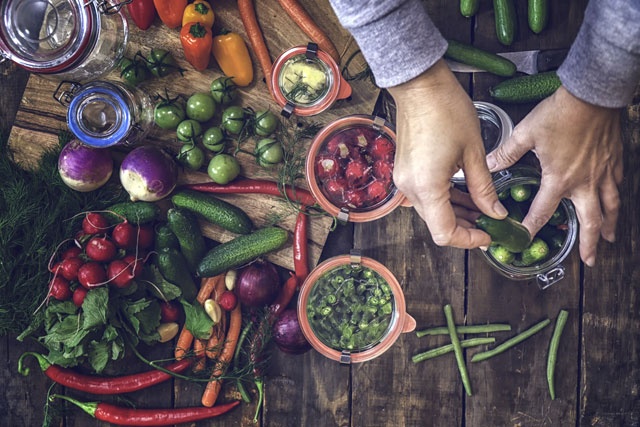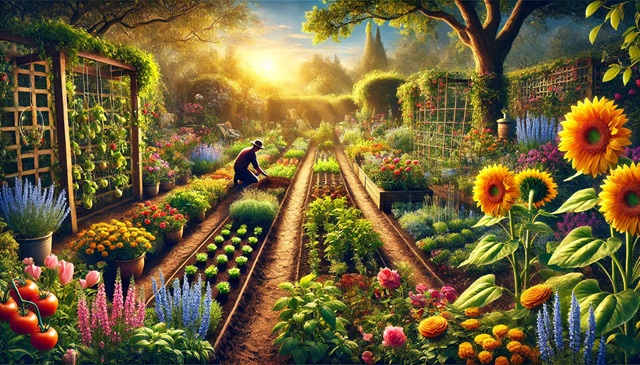When you want to grow larger harvests in your backyard, you might begin to think about fertilizers. Though these may not be necessary when you first start growing, over time, you will find that fertilizing your garden can help to product bigger and healthier harvests.
Why You Should (and Shouldn't) Fertilize
Fertilizing your garden is not something that can be done lightly. When you fertilize your soil, you are preparing it for more growth, and you need to be ready to handle the outcome.
That said, you will only want to fertilize soil when it actually needs the additional attention. To see if your soil needs to be fertilized, you can check the pH of your soil with a soil pH testing kit, available at your local gardening store.
The soil for a vegetable garden should be between 6.0 and 6.8, or almost neutral. This means the soil should not be acidic (numbers below 6.0) or basic (numbers above 7.0).
If you find that your soil is already in the range that is recommended, you don't need to fertilize. But since most soil is either out of range or it has ingredients in it that hinder the proper pH, you will probably need to add chemicals to create the right pH.
Your Soil and What to Do with It
When you are using the soil that's in your yard, you will want to begin by thinking about what type of soil it is. Many yards will have sandy soil or clay soil, while some will have loam. Loam is the ideal fertile soil to have, looking much like the soil you might get out of a bag of potting soil.
Sandy and clay soil are exactly what their names indicate – mostly sand or clay. While these soils are not ideal, they are still effective for growing vegetables.
You simply add these organic materials, stir up the soil, and let the soil sit for a while. Ideally, you might add these materials at the end of a growing season so the soil can become fertile as it's resting in the winter or cooler months.
But if you haven't had time for this, then you can add this as soon as the soil is ready to be worked and prepared for the growing season.
You can also test your soil's pH after you have added this organic matter to get the best possible reading.
Once you have seen the pH in your soil, you will want to take these actions, based on the results.
If your soil is too acidic (lower than 6.0), then you will want to add a thin layer of lime to the top of your garden. This will help to create a balanced pH, and you only have to do this every few years.
You can also used ashes from a wood fire, if you don't have access to lime, but these should only be used in rare instances as they aren't the best substitute.
If your pH is too basic (higher than 6.8), then you will want to find a way to bring the pH down. Many will find that using a small amount of sulfur in the soil will help to balance the pH again.
How Your Plants Eat
In order to make sure that your plants can access nutrients from the soil, you will need to make sure that the levels of certain chemicals are appropriate:
- Nitrogen
- Phosphorus
- Potassium
During your soil test, you can also find out what the levels of each of these chemicals are. You will want to treat deficiencies, and you will want to add more soil to a garden that might have too much of the chemicals.
Most often, you will not need to address these chemical problems unless you see that your plants aren't thriving. In those cases, getting a soil test is a good idea so that you can accurately diagnose the problem and add the proper chemical.
The harvest is an exciting time when you begin to see the results of your labors. Even though you might not have a large harvest your first year, it will still be satisfying to see that you have grown something from your land, and created a viable food source.
All you need to do now is to learn when and how to harvest your vegetables so that you're getting the best results and taste. Just because your plants are large doesn't mean that you should harvest them.
When to Harvest
What many new gardeners don't realize is that harvesting your vegetables should begin as soon as possible during the growth cycle. This isn't to say that you should harvest as soon as you see a small tomato, but waiting out for bigger tomatoes may not be the best choice either.
When you watch your plants grow, you will notice that they reach a certain peak in their growth and that's when the vegetables begin to grow from the leaves or the stems.
You can begin to pull at your vegetables as soon as they become a few inches long, and this is often when they have the most flavor. Beans, for example, should be picked as soon as they are completely grown into a table-sized bean since the growing cycle can't continue without the stem being bare.
You should also begin to pick and harvest your other vegetables when they're medium sized, at least at first. What you will notice is that your vegetables are smaller than those you might find at a grocery store, but the size difference is not a display of your inability to grow.
Many of the vegetables at the market or store are often boosted with chemicals so they are bigger in size. But what you might not realize is that they also don't have the same taste as your smaller and healthier harvest.
Think less about the size of your vegetables and think more about harvesting them when they taste the best.
It's a good idea to start by pulling off one vegetable, tasting it, and then pulling more if the flavor is pleasant. If not, let the plant continue to grow.
Like everything else in gardening, there are different ways in which you can harvest your crops. You can choose to pick them all by hand, which is ideal, or you can choose to have a machine pick your harvest.
In a smaller garden, like the one you have at your home, hand picking is the only way to get your produce. Since you will only have a few plants when you start out, this harvesting process will take only a few minutes of your time.
Pull the vegetable from its stem, leaving as much of the actual stem in place as possible. If you are growing root vegetables, pull the entire root up from the top.
You can also break the vegetables off from their base, as in the case of squash and okra. This will ensure that the plant itself is still in tact, but that you have the main vegetable in your hands.
It's a good idea to harvest carefully and slowly when you do, as this will help to prevent any damage to the main plant. Pick one item at a time, and pick only the vegetables that seem to be ready to pick.
If you're unsure about anything, just leave it where it is and see if it continues to grow in the coming week(s).
Once you have your harvest, you can choose to:
- Eat it immediately
- Store it in your refrigerator
- Dry it
- Can it
- Freeze it
- Cook it and store it
When you have just picked your harvest, the flavors will be at their freshest. If you cook these foods immediately, it will help you have the most delicious meal that day.
Or you can choose to preserve your vegetables to use at a later date. This can be achieved through cooking them into a meal and then freezing them, or using canning or drying methods.
Just because the growing season is over doesn't mean that you're done with the work. After the harvest is the time when you can prepare your garden for next year or for the next growing cycle to begin.
The more preparation you do now, the less work you will need to do when the growing season begins again.
Get Rid of Old Crops
If you want to have a fresh new garden, you will need to get rid of all of the old crops that you have grown this year. Many gardeners will think that keeping these in the ground will encourage new growth or that the plants will just help to fertilize the garden.
What actually happens is that the old crops can cause reseeding of the garden, which may not be what you want to do with next year's garden. If you do, then you can take the chance by keeping the old crops in place, but often, gardeners will change their growth patterns from year to year.
In addition, when you leave old crops in the ground, you may create ideal conditions in which fungus and other diseases can grow over the winter. This can then cause next year's grow to become infected, if it even is able to grow at all.
Finally, removing old crops allows you to see what worked and what did not in certain areas of the garden. This information can help you as you begin to start your growing for the following year.
Till the Soil
Once the plants have been removed, it's time to till the soil again and again. This will break up the roots in the soil from the old plants or from weeds. The more that you can break up the soil, the less problems you will have from these errant plants.
You can use a hand tiller or a rototiller to handle this task.
Ideally, you will want to till over the soil a few times before the frost sets in and the ground becomes too cold to till anymore.
Spend a number of days turning the soil over and over again until it is loose and free from any large root structures. Though you might not be able to get all of the roots, you will certainly prepare the soil much more effectively than if you simply pulled the old plants out and then let the soil sit there for the entire season.
If your soil is sandy or clay-based, it can be a good idea to add more organic matter to the tilled soil before things freeze up for the season. This can include things like hay, compost, mulch, etc. The more organic matter that you add to the soil, the more organic material can infuse the remaining soil.
When this happens, you will be able to create a nourishing base for your plants, which then allows you to have the right conditions for even bigger harvests next year.
Organic matter can be spread on top of the soil and then tilled into the soil as a part of your preparation tasks. You can also add organic matter to your garden as the season progresses, helping to make this chore a part of the process, rather than an all-day chore at the end of the season.
Some people find that putting leaves from their yard on the top of their garden during the winter helps to add back nutrients that have been sucked out from the growing season.
Others suggest that you use restorative plants that can add nutrients to the soil. Some of these include:
- Wild oats
- Clover
- Wheat
These plants can then take hold and rejuvenate the soil, even though they might seem like they would only take from the soil.








